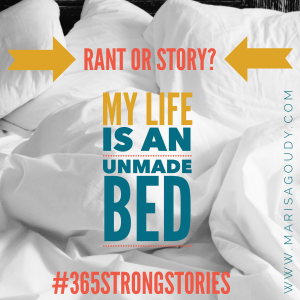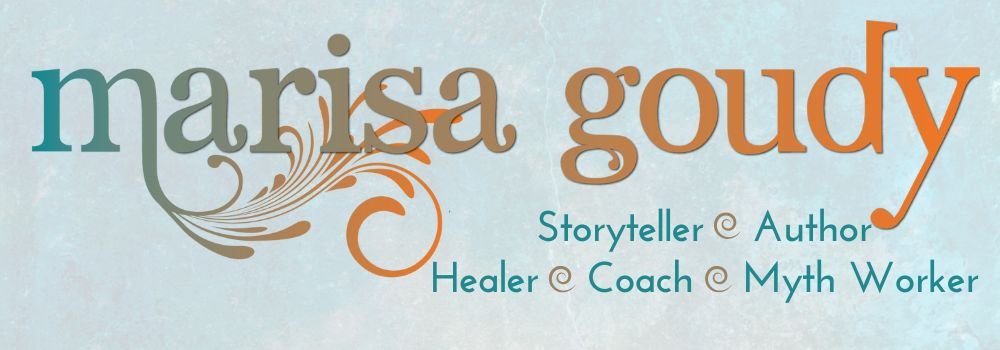 This morning as I rushed from room to room gathering necessary clothes and snacks and computer accessories and toys, it occurred to me:
My house is like an unmade bed.
This morning as I rushed from room to room gathering necessary clothes and snacks and computer accessories and toys, it occurred to me:
My house is like an unmade bed.
I was tangled in the twisted bed clothes of an entire household of stuff. Everything I needed was lost in this riot of a rumpled nest and it felt nearly impossible to meet the day.
This blistering tirade fueled my mad dash (because, of course, one girl had to make the bus and another had to be dropped at playgroup exactly on time so that mama could make her daylong VIP session with a client).
Once I was safely belted into a quiet car with my coffee, I began composing the day’s story in my head, so pleased that I had such a powerful image and title. But then I paused.
Was I a storyteller or a cranky woman who just wanted to score some sympathy points for performing the impossible? (At this point, I realized that I wasn’t a righteous super hero. I would probably just sound like a disorganized creature who, though hilariously human, was also a trifle whiny.)
Do you want to entrance them with story or blind them with shared rage?
A strong story is compelling. It moves the reader to say “me too!” and click share. Of course, the same can be true in the case of a red hot rant that pushes your audience’s buttons.
But one of these is likely to be full of gory details that you don’t want to revisit or defend in conversation. It’s about a topic that’s too intimate, too raw, too prone to morning after regret.
When you think about it that way, if you’re writing to build your business and establish your professional reputation, you want to avoid that kind of TMI like the plague.
An authentic blog post is intended to give people a window into your world, but the goal is to hold onto a few shreds of dignity and authority so that readers will say “I want to work with that human.”
A story is a well processed piece of prose that features a beginning, a middle, and an end. It has a conflict and a resolution and a protagonist you can root for.
When you write a story, you want to be vulnerable, but you’re not yowling about an open wound like you might in a full blooded rant. Instead, you’re showing off your healed scars with a smile.
How do you know when your post is more diatribe than engaging story?
A rant doesn’t have a strong ending. It may not even have a clear beginning. It’s all messy middle as far as your harangue colored glasses can see.
There’s plenty of conflict, but resolution hides below the horizon of a limitless sea of indignation.
Now, your rant may have characters - generally the wounded party (who may or may not be you, the writer) and the evil perpetrator (an actual villain or just the beasts of excess and chaos). In your unfiltered narrative, you might not be able to make your hero likeable enough to root for. An angry victim will boil alone in her vitriol if she doesn’t have a plot to hold her and prove her case.
Ask yourself: how do I want to connect?
We live in the age of storytelling, not in the age of tirades.
Ok, so that is a total lie seeing as we are living through an American presidential campaign, but we really are in a golden age of storytelling when we get to market our businesses not through newspaper ads but through content that connects.
An emotional explosion might bring the right people through your door. But, most often, those rants will fall flat and keep keep your ideal clients at arm’s length. How can they see the solutions you offer through the drama you describe?
Write stories, not rants. Your readers and your business will thank you for it.
Need some help telling a story that connects? Download your free strong storytelling guide now.
